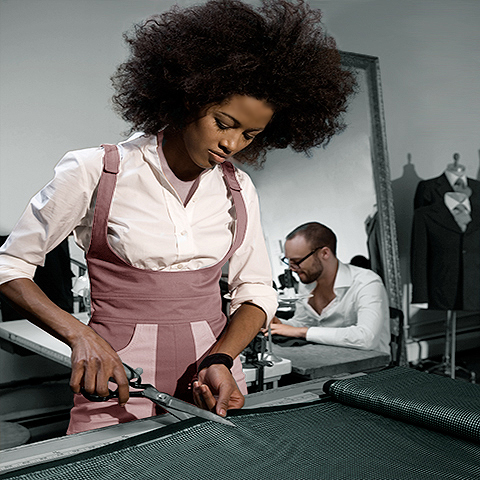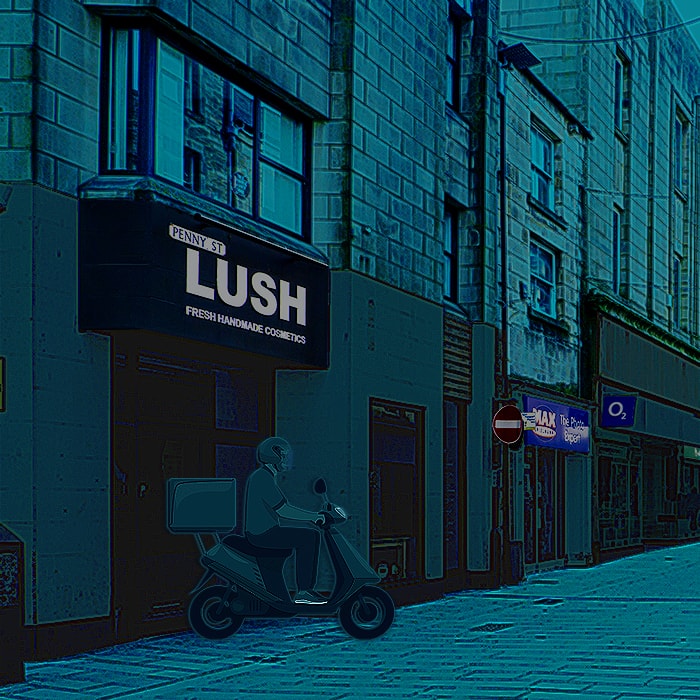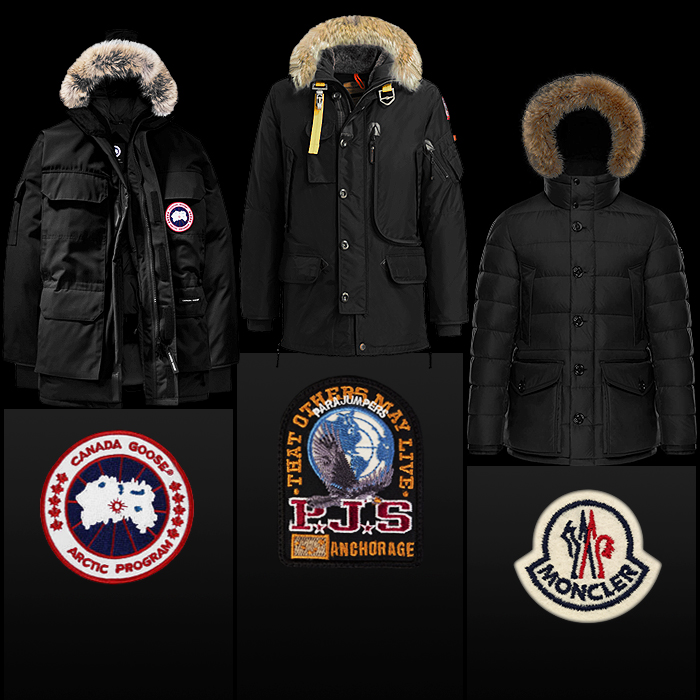Customisation is the future of Retail!

For hundreds of years everything was individual and bespoke, and made-to-order. Then came mass-manufacturing and off-the-peg retail (prêt-à-porter) - which allowed more consumers to buy reasonable quality products, and moreover take their wares home with them on the same day. For the wealthiest echelons of society, made-to-order is still used regularly to deliver unique and individual products, but the majority of consumers want lower cost products which are available sooner.
Customisation as such is nothing new really, made-to-order customers had their initials embroidered onto their garments to denote quality and exclusivity when manufactured shirts first arrived, but then the mass-manufacturers started to offer the same monogramming service - one of the earliest examples of mass-market customisation - meaning that tailors had to increasingly rely on more visible luxury trims and finishes to give them an edge.
Where we are today really is that customers increasingly want to be able to stamp their individuality onto a particular product, but they don’t wish to pay over the odds for the privilege, nor do they wish to wait overly long to receive their goods. There’s quite a number of generic customisation services - like for instance mobile phone case specialists - who allow you to bling up and create your own unique phone case.
Here follows a brief list of some of the better examples of companies offering customised products:
NIKEiD - Create your own version of the Free / Flyknit trainer
Build a Bear Workshop - Choose your base model cuddly toy; e.g. dog, then select colour / characteristcs and outfits
MakieLab - Design your own doll
Brick Brigade - Customised Lego kits and minifigs
Evisu - Customised Jeans
Swarovski Crystallized (now defunct) - Make your own jewellery from Swarovski crystal elements
Prada & Fendi - Both these brands pioneered handbag ornaments (artsy characters / motifs) attached by keyring / key chain - sometimes the ornaments cost as much as the original bag!
Swarovski Crystallized was a great idea, but has proven to be too much choice for the consumer - that is to say that consumers are far more comfortable with making smaller design changes, than actually specifying or making something too much from scratch. I also believe that had Crystallized had a cleverer web-interface which allowed you to visualises and actually plot out your creations, then it may actually have survived - so Internet technology plays a big part in this too.
Retailers need to think more along the lines of modular components, much like architects do with their ’Curtain Walls’. The most successful customisation retailers are the ones who offer a more structured process / list of options to their consumers. Build-a-Bear is a classic example - you choose from a set number of base models and assign various characteristics and outfit choices. NIKEiD allows you to create your own fresh-looking trainer from a couple of base models. In both cases the overall options are relatively limited but give sufficient variety for customers to feel reasonably special. A big reason for Nike’s success is in their web interface, and how easy it makes the customisation process to complete.
I myself am a big Lego fan, for which there are a number of custom kit manufacturers - like Brick Brigade who create custom versions on top of the existing character and object sets. I have advised Lego a couple of times now to offer their own custom service - so that you can pay a little extra, but get the Volkswagen Camper Van for instance - in a different primary hue / colour-way than the bog standard fire engine red. You can already buy the myriad different Lego bricks individually, but much like with Swarovski Crystallized, asking the customer to do too much legwork does not make for a successful formula. I recently bought a Lego set where I did not like one of the accent colours on a building - and so I asked the staff at the counter for replacements for a particular component in a different colour-way. There’s no service yet to easily allow you to switch out a whole colour (across several different shaped blocks) within a set - you are very reliant on the goodwill of the counter staff!
Companies which offer their customers easy and low-cost customisation options will have a distinct edge over their competitors. Most weekends I am aware of customisation events in-store or at the mall, just last weekend I witnessed a Kipling Bags event at Westfield where customers could embroider names onto their bags. I’ve seen several jeans brands offering customisation in-store, most recently Evisu at Selfridges.
The 3D / Additive Printing revolution has helped a number of fledgling companies set up complimentary customisation services, which many leading brands have taken advantage of too. 3D Printing is still very much in its infancy, but as technology gets more sophisticated and more mature, there will be all kinds of new clever complementary manufacturing / finishing processes which will give companies quick and easy customisation options. The MakieLab Dolls are for instance largely created through onsite 3D Printing.
Glasses / Sunglasses are another prime example of where 3D Printing could help provide custom components to give customers a more bespoke feel on a mass-manufactured level. You should be able to mix and mingle different coloured arms, hinges, bridges, nose-rests etc. - all towards creating something uniquely you - much in the same way you mix up different coloured components for your custom NIKEiD trainer.
I am quite particular about garments - and look for very specific characteristics - 4 sealed pockets on casual jackets / parkas / coats, with 2-way main zip etc. Many a time have I walked away from a garment which was 80% suitable but it lacked a couple of finishing touches / qualities. If the retailer had offered customisation, I could have bought the jacket, and asked for additional chest pocket, 2-way zip etc. It is quite often the little details that result in a ’NO SALE’ decision. Allowing your customers a set number of customisations in many ways removes obstacles to purchase also - certainly in my case.
A key principle here though is using common components / core units etc. - so that the finished goods can still be easily produced and readily despatched. Having too many options makes it too complicated which means the price point and time for manufacture / assembly would not be right either. I really like rear-pocket flaps on my jeans which kind of limits my selection to True Religion at the moment as the majority of quality jeans manufacturers don’t offer the pocket flap option currently - a simple example where a little customisation could get you more business ...

Did you find this content useful?
Thank you for your input
Thank you for your feedback
Upcoming and Former Events
Affino Innovation Briefing 2024
Webinar - Introduction to Affino's Expert AI Solutions - Session #2
Webinar - Introduction to Affino's Expert AI Solutions - Session #1
PPA Independent Publisher Conference and Awards 2023
Meetings:
Google Meet and Zoom
Venue:
Soho House, Soho Works +
Registered Office:
55 Bathurst Mews
London, UK
W2 2SB
© Affino 2024


















